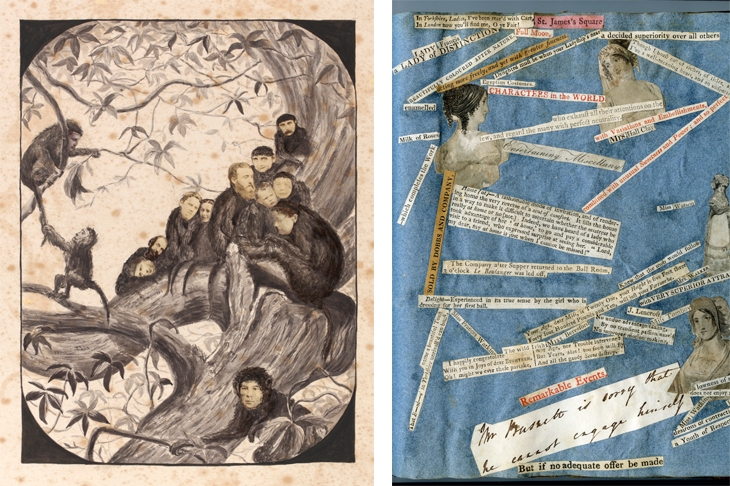The art-history books will tell you that sometime around 1912, Picasso invented collage, or, actually, perhaps it was Braque. What they mean is that sometime around 1912 a man of sufficient standing took up a technique that had been quietly practised in largely domestic spheres by a largely female army of amateurs, and applied it in his own work. Cue the universal astonishment of observers who pretended they had never seen such a thing before.
This narrative has been recycled ever since, assuring us that the collage techniques that shaped the language of dada, surrealism and all the other isms that made up modernism, as well as pop art and even today’s Photoshop-driven design, all emanated from that one original spark of paper-sticking cubist genius.
So thank heavens that the National Galleries of Scotland’s new exhibition, Cut and Paste: 400 Years of Collage, is here to set the record straight. A sprawling festival of collage, papier collé, découpage, photomontage, photocollage, cut and paste, scrap work, mosaic work — call it what you will — fills both floors of the gallery and effectively resets the chronology.
The rediscovery of all these unheralded practitioners of premodernist collage is exciting. The range of collage-esque techniques that were practised over the centuries before Picasso unfolds like a museum of curiosities. Complicated 16th-century anatomical flap books vie with similar constructions that advertise how Humphry Repton might improve your Georgian parkland. Elsewhere a creepy, outsize die-cut baby hovers alarmingly over a stuck-down arrangement of posies and disembodied hands.
Even better are Mary Delaney’s still quite astonishing botanical collages, which pop off the walls with a vibrancy that belies the fact they were created 250 years ago from tiny shards of hand-tinted paper by an ‘amateur’ artist in her seventies. Nearby, elaborate silhouettes and stage-set portraits, decorated home furnishings — including a screen covered with pictures reputed to have been pasted there by Charles Dickens — and ‘paper transformation’ constructions that become nocturnal scenes when backlit by a candle all indicate the rampant variety of creative ways with cut paper that emerged from people’s homes as soon as the materials became readily available.








Comments
Join the debate for just £1 a month
Be part of the conversation with other Spectator readers by getting your first three months for £3.
UNLOCK ACCESS Just £1 a monthAlready a subscriber? Log in